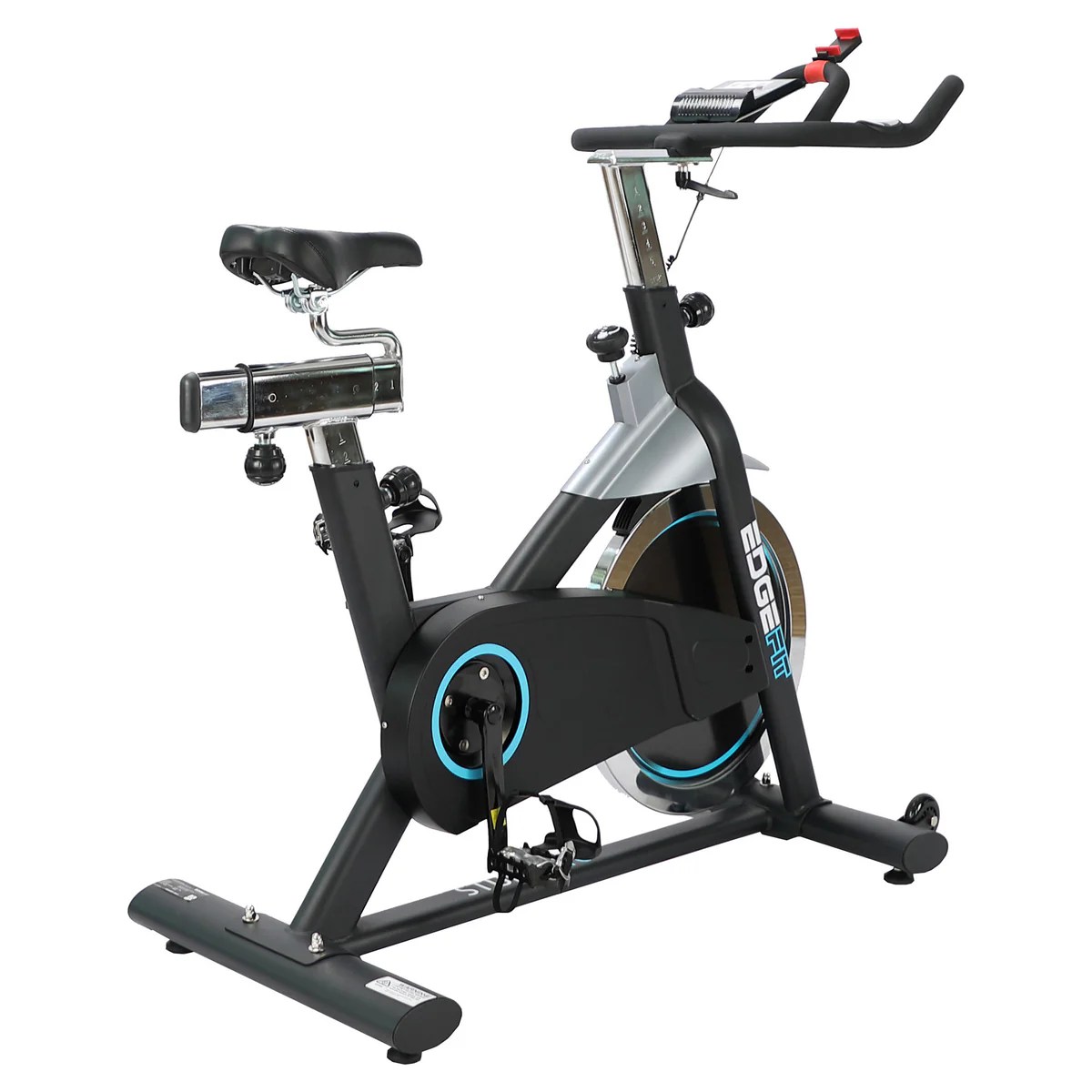
Picture this: you’re pedaling away on your trusty exercise bike, the wind in your hair (or maybe just the ceiling fan blowing), while your favorite tunes pump you up. An exercise bike isn’t just a piece of furniture you hang clothes on; it’s your ticket to heart-pounding health and the secret weapon in your battle against the bulge! Get ready to explore the wondrous world of exercise bikes, where calories go to die and endorphins throw a wild party!
From boosting your cardiovascular health to being a superhero for those with disabilities, exercise bikes are the unsung champions of fitness. We’ll dive into how these two-wheeled wonders aid in weight management, cater to health conditions like diabetes, and ensure you maintain your ergonomics while pretending you’re in the Tour de France. So, gear up for a ride that’s as informative as it is entertaining!
Benefits of Using an Exercise Bike
Jumping on an exercise bike isn’t just about pedaling in place while you ponder the meaning of life—it’s about sprinting toward cardiovascular health, weight management, and low-impact workouts that even your great-aunt Edna would applaud! Buckle your helmet; we’re about to dive into the delightful world of exercise bikes, where sweat is your best accessory.
Cardiovascular Health Contribution
Riding an exercise bike is like sending your heart to a spa day, but without the cucumber slices on your eyes! Regular cycling gets your heart pumping and blood flowing, which can lead to a plethora of cardiovascular benefits. This rhythmic pedaling can help lower blood pressure, enhance circulation, and even improve cholesterol levels. Studies show that incorporating cycling into your routine can reduce the risk of heart disease by up to 50%.
Just imagine, while you’re spinning those wheels, your heart is doing a happy dance!
“Cycling is a great way to strengthen your heart and keep those arteries happy!”
Impact on Weight Management
An exercise bike is your secret weapon in the battle against the bulge. Not only does it provide a workout that torches calories, but it also helps to regulate metabolism, making it easier to manage your weight. Pedaling at a moderate pace can burn approximately 400-600 calories an hour, depending on your intensity level. Whether you’re churning through a Netflix series or daydreaming about your next snack, you’re actively working off those extra calories!Low-impact workouts like cycling are particularly useful for those who may have joint concerns or restrictions.
For instance, a 30-minute session three times a week can lead to significant weight loss over time. Couple this with a balanced diet, and you’re not just pedaling—you’re cruising down the highway to a healthier you!
Advantages for Individuals with Disabilities
Exercise bikes aren’t just for the fit and fabulous; they also offer incredible benefits for individuals with disabilities or mobility issues. The low-impact nature of cycling minimizes strain on joints, making it a friendly option for those with arthritis or chronic pain. Moreover, exercise bikes can be adjusted to accommodate various fitness levels and physical limitations, providing an inclusive workout experience.Engaging in regular cycling can boost mood, enhance mobility, and increase independence.
Many rehabilitation programs incorporate stationary cycling as a way to improve strength and endurance in a safe environment. Picture someone regaining strength and confidence, pedaling their way toward a brighter and more active future!
“The exercise bike: where wheels meet wellness, and everyone can join the ride!”
Exercise Bikes and Health Conditions

Exercise bikes aren’t just for fitness aficionados looking to shed a few pounds or tone up; they can be life-changing machines for those managing health conditions. Their stationary nature makes them an ideal choice for individuals facing various health challenges, allowing for a controlled and safe exercise environment. Let’s dive into how these two-wheeled wonders can assist in managing specific health conditions with a sprinkle of humor to keep things lively!
Exercise Bikes and Diabetes Management
Individuals with diabetes often have to juggle their blood sugar levels like a circus performer balancing flaming torches. Fortunately, riding an exercise bike can help stabilize those levels while giving you a front-row seat to the most exhilarating show of your life: your own sweat production! Regular cycling aids in controlling blood glucose by improving insulin sensitivity and promoting weight loss.
Here are some insights on how exercise bikes play a pivotal role:
- Consistent Activity: Regular cycling helps maintain steady activity levels, which is key in managing diabetes.
- Weight Management: Cycling burns calories, which can help with weight loss and lower overall insulin resistance.
- Cardiovascular Health: Improved cardiovascular fitness lowers the risk of heart disease, a common complication for those with diabetes.
“Exercise is a celebration of what your body can do, not a punishment for what you ate.”
Cycling Benefits for Multiple Sclerosis
Multiple sclerosis (MS) can feel like a game of Whac-A-Mole, where symptoms appear unexpectedly, leaving individuals scrambling for relief. However, an exercise bike can be a reliable ally in this battle, providing a low-impact workout that can enhance strength, flexibility, and endurance. Here are some notable benefits of cycling for those with MS:
- Improved Mobility: Regular cycling helps maintain and improve mobility, countering the fatigue and stiffness that often accompany MS.
- Enhanced Mood: Exercise releases endorphins, acting as a natural mood booster—a perfect antidote to the emotional rollercoaster of living with a chronic condition.
- Adaptive Options: Many exercise bikes come equipped with adjustable features, allowing for personalized setups that cater to individual needs and comfort levels.
“Movement is a medicine for creating change in a person’s physical, emotional, and mental states.”
Exercise Bikes in Combatting Obesity and Related Diseases
In the battle against obesity and the myriad of diseases that follow like shadowy sidekicks—think diabetes, hypertension, and heart disease—exercise bikes stand as trusty steeds. They are not just machines; they are gateways to a healthier lifestyle. Let’s look at how they contribute to this fight:
- Calorie Burning: An hour on an exercise bike can burn anywhere from 400 to 600 calories, depending on the intensity. That’s a whole pizza worth of calories—just kidding, kind of!
- Accessibility: For those less inclined to hit the gym or go for a run, exercise bikes offer a cozy, familiar territory. You can pedal away while watching TV or reading a book—the ultimate multitasking!
- Consistency Leads to Results: Sticking to a regular cycling routine fosters long-term weight loss and health improvements, leading to a more vibrant life.
“The journey of a thousand miles begins with one pedal stroke.”
Importance of Ergonomics in Exercise Bike Usage

When it comes to pedaling away the calories, you want to ensure that your bike is as friendly to your body as a puppy with a wagging tail. Ergonomics—the study of people’s efficiency in their working environment—plays a crucial role in making sure those cycling sessions don’t leave you feeling like you’ve been run over by a truck. A well-designed exercise bike can prevent injuries, enhance performance, and make your workouts a whole lot more enjoyable.Proper ergonomic design in fitness equipment is vital for preventing injuries that could turn your cycling adventure into a painful saga.
Poor posture or ill-fitting equipment can lead to discomfort or even chronic injuries that could have you walking like a crab for weeks. A properly designed bike helps maintain the natural alignment of your body, which is essential for optimal performance and injury prevention. After all, nobody wants to be the person who has to explain to their doctor that they hurt themselves from wildly incorrect cycling posture!
Guide on Proper Posture and Adjustment Settings
Getting the right posture while cycling is akin to finding the perfect pizza topping—it’s essential for a satisfying experience! Adjusting your bike properly enhances comfort, boosts performance, and prevents those pesky injuries that seem to sneak up on you like a cat in a cardboard box. Here’s how to ensure you’re set up for success:
- Seat Height: Adjust the seat so that your knee is slightly bent at the bottom of the pedal stroke. If your leg is too straight, you’re basically asking your knees to do gymnastics they’re not trained for!
- Seat Position: The front-to-back seat adjustment should allow your knee to be directly above the pedal when your foot is at the 3 o’clock position. No one wants to become a knee pretzel!
- Handlebar Height: Set the handlebars at a level where you can reach them comfortably without straining or hunching over. If you feel like a contortionist while trying to grab the handlebars, it’s time to make a change!
Comparison of Exercise Bikes Regarding Ergonomic Features
Not all exercise bikes are created equal, much like how not all superheroes wear capes. Some bikes come with features that can make your experience smoother than a buttered slide, while others may leave you feeling like you’re riding a medieval torture device. Here’s a comparison of different types of exercise bikes and their ergonomic features, ensuring you’re equipped with the right knowledge for your next bike purchase!
| Type of Exercise Bike | Ergonomic Feature | Comfort Level |
|---|---|---|
| Upright Bike | Adjustable seat height and handlebars for optimal posture | Good |
| Recumbent Bike | Reclined seating position reduces back strain | Excellent |
| Spin Bike | Customizable saddle and handlebar height for intense workouts | Moderate |
| Hybrid Bike | Combination of upright and recumbent features for versatility | Very Good |
Concluding Remarks
In conclusion, whether you’re looking to shed pounds, improve your health, or simply enjoy the thrill of cycling without the fear of road rage, the exercise bike is your new best friend. With its ergonomic features and numerous benefits, it’s time to embrace this indoor cycling adventure that promises not only to get your heart racing but also to add a sprinkle of fun to your workout routine.
So hop on, pedal away, and let the good times roll!
FAQ Compilation
How often should I use an exercise bike?
For optimal results, aim for at least 150 minutes of moderate exercise each week, which could be broken down into 30-minute sessions five times a week!
Can I use an exercise bike if I have joint pain?
Absolutely! Exercise bikes offer a low-impact workout that is gentle on your joints while still providing a great cardiovascular workout.
What’s the difference between upright and recumbent exercise bikes?
Upright bikes mimic a traditional bike position, giving you a more intense workout, while recumbent bikes provide back support, making them perfect for a leisurely ride.
How can I stay motivated to use my exercise bike?
Mix it up with music, podcasts, or virtual cycling classes, and reward yourself for reaching milestones—like a snack that’s not a protein bar once in a while!
Do exercise bikes really help with weight loss?
Yes! When paired with a balanced diet, regular sessions on an exercise bike can torch calories and help you reach your weight loss goals.





